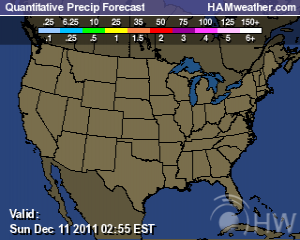Cracked Sewers Bleed Fecal Germs
New studies in California and Wisconsin reveal a dirty little secret: Out of sight, many urban sewer pipes are failing and germ-ridden filth is bleeding out.
The studies tracked material hemorrhaging into storm drains. These pipes, which channel their contents into streams and coastal waters, are designed to collect fairly clean rainwater and runoff from watered lawns. Yet raw sewage at times constituted nearly 20 percent of one local storm drain’s flow, reports Patricia Ann Holden of the University of California, Santa Barbara and her colleagues.
“We found the same thing,” says Sandra McLellan of the University of Wisconsin–Milwaukee. In the August Water Research, her group reports finding a bacterial indicator of human feces — Bacteroides — in samples from all 45 storm water outflows in the Milwaukee area that it monitored over four years. The data show that sewage contamination “is nearly ubiquitous in the urban environment,” McLellan says.
In Santa Barbara, Holden’s team mapped areas where sewer pipes were above, next to or below storm pipes and then added a fluorescing dye to sewage. Using an automated sensor, they monitored for the telltale dye in nearby storm drains.
In one system, the dye showed up in storm drains within a half hour. In a second, it took between two and 74 hours for the dye to emerge in storm water. In both instances, two other bacterial indicators of human feces accompanied the dye, the California scientists reported online July 25 in Environmental Science & Technology. In a third system, where the apparently leaky sewage pipes lay below storm drains, no dye or germs appeared to wick up and into clean-water pipes.
The California study is among the first “that definitively links leaky sewers to problems with water contamination of rivers, oceans and lakes,” says Marc Edwards of Virginia Tech in Blacksburg. “It informs our understanding of how decaying water infrastructure can threaten human health and the environment, and helps in prioritizing investment to mitigate these risks.”
Last year, Randall Hunt of the U.S. Geological Survey in Middleton, Wis., and his colleagues showed that storm drains aren’t the only potentially dangerous recipients of leaked sewage. In the Oct. 15 Environmental Science & Technology, they described tracing the movement of human viruses from sewer pipes to groundwater and drinking water wells.
Many drinking water mains, which are susceptible to corrosion and small breaks, have also been laid near sewer pipes. When water is squirting out under pressure from holes in those mains, germs can’t enter. But mains occasionally experience pressure drops, Edwards notes, which can momentarily cause germy material from the environment to get sucked in. Later, he notes, that filth will surge on toward home faucets.
Water quality managers typically scout for sewage contamination by measuring counts of the common intestinal bacterium E. coli or other “indicators” of feces, whether human or animal. But animal feces are not necessarily pathogenic nor evidence of sewer breakdowns, McLellan notes. In contrast, human germs like Bacteroides point to sewage leaks and exposure to potentially dangerous germs.
McLellan looked for fecal indicators in storm water and found high concentrations of nonpathogenic fecal bacteria often occurred in the absence of sewage-derived human germs — and vice versa. So her group’s new data suggest, she says, “that it’s most important to focus on sewage-specific bacteria,” which can be done with new genetic probes, to pinpoint the most serious sewer leaks.
Santa Barbara recently did just that, repairing several segments of decaying sewer pipes based on data from Holden’s team





You must be logged in to post a comment Login